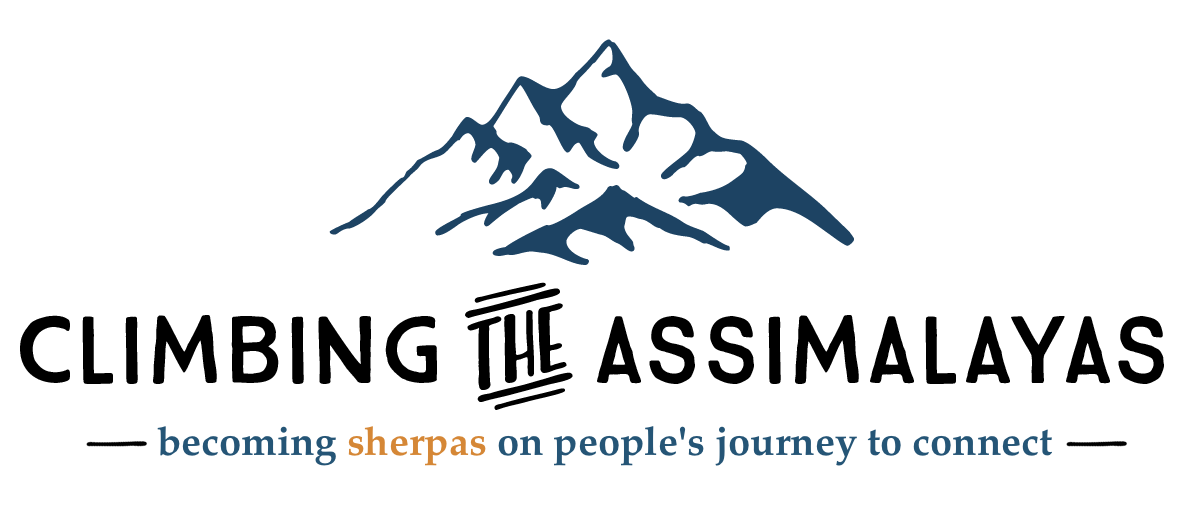Leveraging the Affinity Factor
One of the biggest realizations I've had in ministry happened over 20 years ago. I was at a conference where God exposed my fears about the need for more vital friendships with other men. At the end of the conference, we were challenged to find 4 to 6 other men we had "an affinity for" and gather with them weekly for prayer and support. Affinity?! It felt like cheating to me. I felt like saying, "You mean it's OK to hang out with people I have a natural desire to be with? I thought we had to include everybody or nobody at all!" Filled with reluctance and excitement, I formed a breakfast group for guys I actually felt a connection with and a desire to know better.
22 years later, we are still meeting.
A lot of life has happened to us in the mean time: marital crisis', unemployment, the birth of children, now sending them off to college, you name it: Life has brought it to us. But this "Fellowship of the Ring" has sustained us and resourced us in ways that have kept us from tragic mistakes and helped us to seize opportunities in a way that we couldn't have without each other. This connection was a God-thing, but He used a common affinity as its genesis and sustaining power.
"How good and pleasant it is when brothers live together in unity!...for there the LORD bestows his blessing, even life forevermore." -Psalm 133:1,3
The Old and New Testaments are filled with examples of friendships that formed with a great deal of affinity, some in surprising ways. It should not be surprising then that affinity plays a role in assimilation.
One of the reasons that guests make a decision to return to your church within the first 7 minutes of their first visit is because they are unconsciously asking the same question all of us instinctively ask ourselves when we find ourselves in a new environment: "Is there anybody here who's like me?" As Rick Warren says, "You don't attract who you want, you attract who you are".
With that said, here is a best practice for leveraging the affinity factor to help new people connect at your church. It comes from a fellow Sherpa who is helping others "Climb the Assimilayas" in Normal Illinois. Her name is Nikki Green, Pastor of Involvement at Eastview Christian Church. When launching small groups, Nikki uses people's occupations to help form the tables from which groups are launched. This means...
- Asking for people's occupation when they sign up for an event that small groups are launched out of.
- Grouping people at tables by occupation for "X" amount of weeks before launching as a small group .
Group Connect: our event that launches new small groups from tables.
Nikki has around a 91% stick rate after the first study. I have seen our groups launching more successfully by adding occupation to the affinity matrix as well. Why? Because the #1 thing that brings people together in our culture is socio-economics. It trumps religion, ethnicity, gender and even age. Basically, if people's lifestyles are at the same socio-economic level, they have similar housing, eat out at similar restaurants, vacation at similar places, have similar hobbies, and have similar work environments. Their kids play soccer together, attend the same schools, and have similar interests as well. What determines this lifestyle? Career and occupation.
Nikki says by linking people together in the fields of Communications, Technology, Construction, Entrepreneurial ventures, Service Industries, Arts, Education, Management and the like, the affinity factor increases exponentially. She also says occupation has proved itself as even more important than people being in the same generation or zip code.
So consider affinity as you bring people together. Incorporate it somehow into your existing strategy...and share your findings with us.
- What is a demographic that you have a natural affinity for? Why is that? How does occupation or socio-economics play into that?
- Looking at your small groups through the lens of socio-economics, do you have any groups that share an affinity based on that dynamic? Describe them.
- What are some opportunities and cautions to keep in mind in using occupation to help leverage affinity in the people you are assimilating?
- What is one program that you could test out using occupation as a way of leveraging affinity?



